Editor’s Note: This post is written by a member of LTV’s sponsored content team, The Leisure Explorers. Do you own a Leisure Travel Van and enjoy writing? Learn more about joining the team.
If you’re like many of us, chances are you’ve traversed the 110-some-odd miles of Interstate I-95 spanning the South Carolina and Florida borders without ever seeing the Atlantic coast. Yet, the curious venturing off the Interstate down a coastal road less traveled will discover folksy, rustic seaport towns that invite you to stop and stay, and, here and there, you’ll even encounter a vista that invokes an Oh Wow in you.
There is only one area along I-95 in Georgia where you can glimpse the Atlantic coastline and maritime activity from the road. That area lies between exits 36 and 29 off the Interstate, where three exciting and diverse destinations await you. Two of these destinations are world-famous. One man-made phenomenon in the area will invoke an Oh Wow from you if you make the trip only minutes away off the Interstate.
We live on the Georgia Coast, and there’s much to say about where to go and what to do here. In this fifth part of our series about Coastal Georgia, we continue our north-south journey down the Georgia coastline to mention two destinations: Brunswick and St. Simons Island.
If you’re a beachgoer, boater, golfer, or nature enthusiast, enjoy a variety of eateries and historic sites, or are working on your family genealogy, this section of the coast may appeal to you for a quick getaway or a more extended stay.
The City of Brunswick: A Story of Revivalism
You won’t find many travel media sources that champion Brunswick as a place to put on your travel bucket list. Like many industrial-era cities in America, Brunswick is in the throes of a post-industrial revival. The evidence of this revival is why we suggest a visit.
The downtown historic district offers a glimpse into Brunswick’s storied past. Here, you’ll see grand old buildings that present modern new businesses wrapped in late 19th and early 20th-century garb. Old storefronts, now new, line the downtown streets and present folksy, quaint, downright affordable eateries that offer tasty treats. You’ll even discover an outlet for Georgia’s award-winning single estate, Richland Rum, on Newcastle Street. If you’re a rum lover, stop in for a tour and a tasting your taste buds will not soon forget.
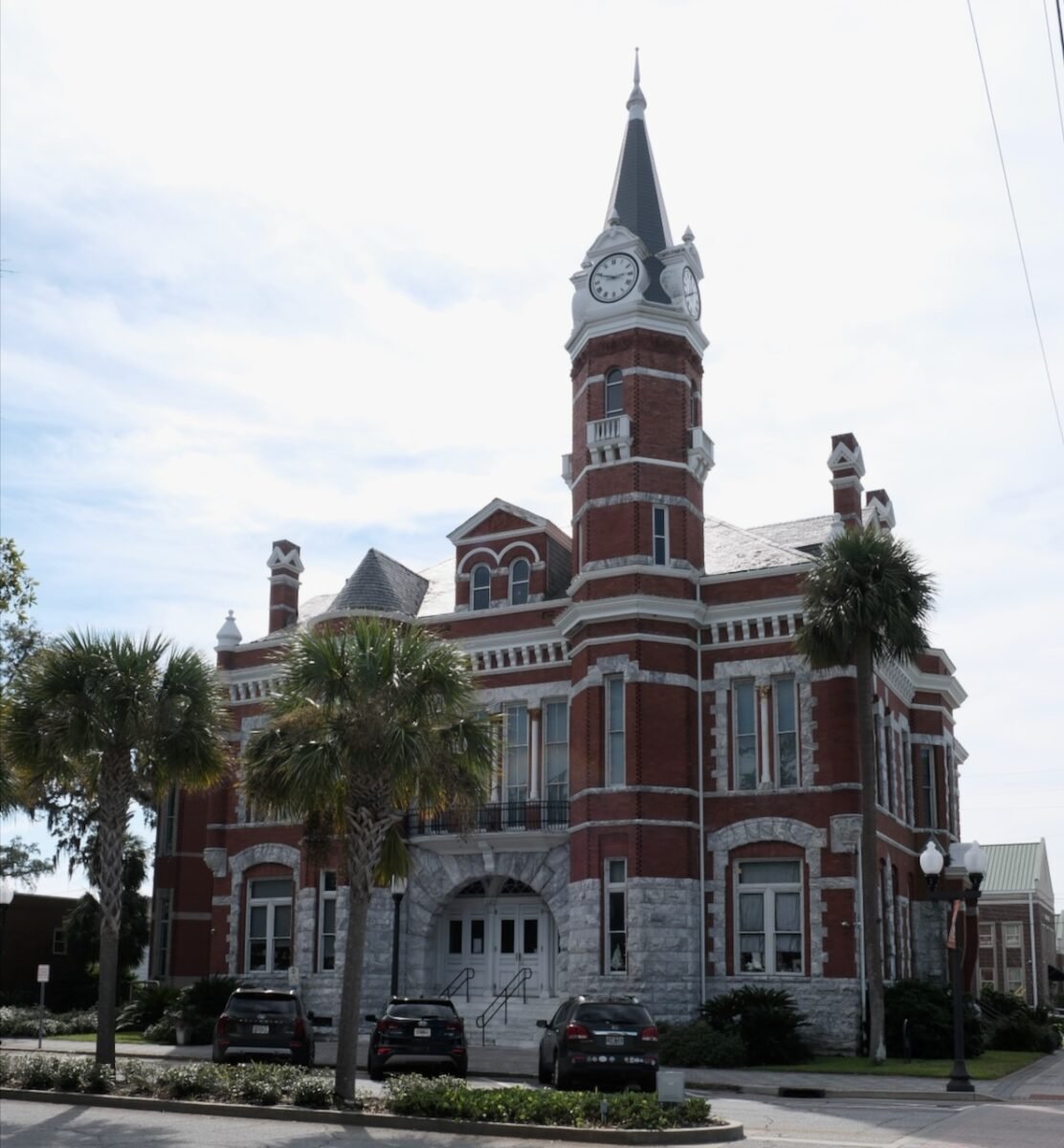
Brunswick: Notable Sights
The areas around the downtown area are decorated with picturesque late 19th and early 20th-century buildings and homes. You’ll marvel at their design and architectural grandeur but bask in the knowledge you are not responsible for their upkeep.
Not far from downtown, you’ll encounter the majestic Lovers Oak, a natural marvel that has been a silent witness to history for centuries. This 900+-year-old tree is steeped in local lore, and Spanish moss drapes its twisting branches to present an enchanting silhouette against the Georgian sky.
Early American legends imply Native American couples once met beneath the canopy of Lovers Oak to pledge their devotion, a tradition that continues with lovers from all over that imbues the tree with a romantic aura.
The Lovers Oak is more than just an ancient tree: it’s a living testament to the region’s rich heritage and a symbol of enduring love in the Brunswick community. Its presence offers a serene escape and a tangible connection to the past, inviting locals and visitors alike to pause, reflect, and share in its timeless beauty.
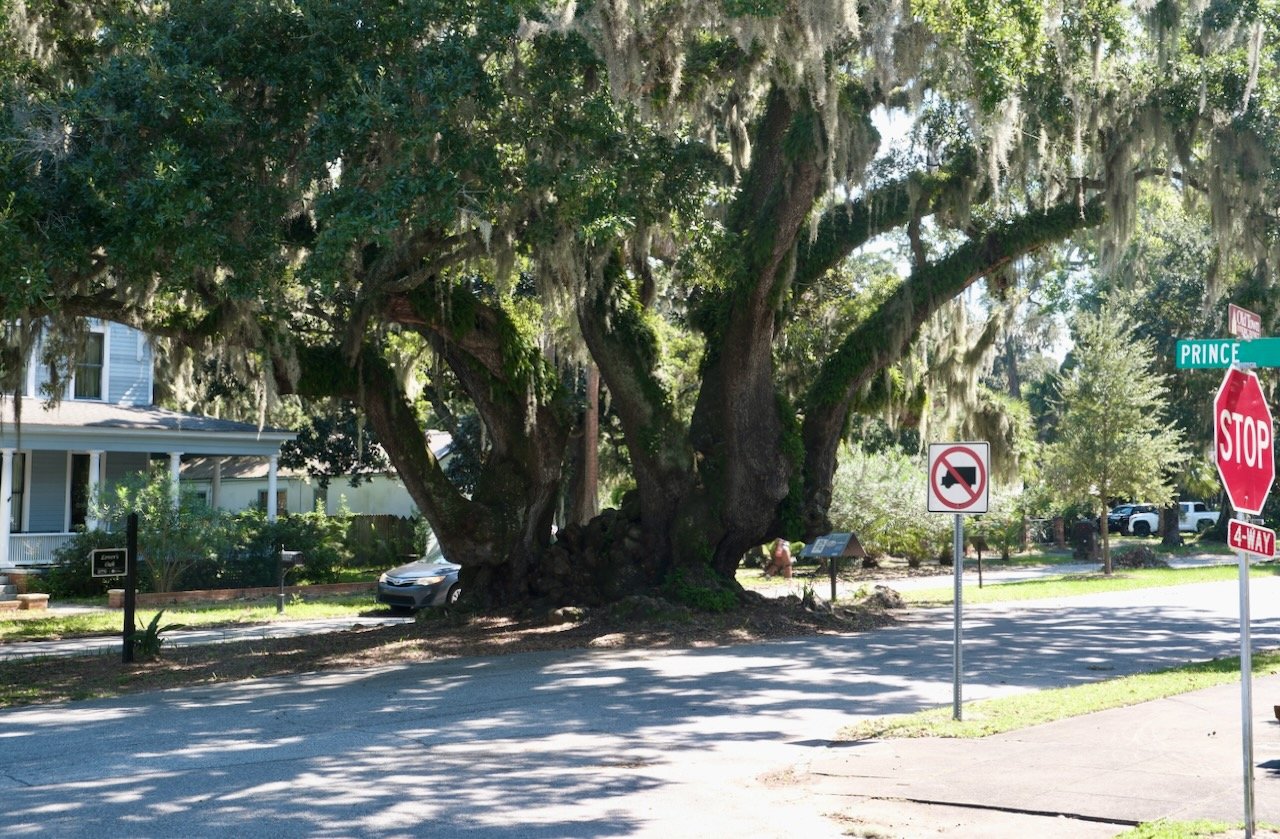
Brunswick: A Shipping and Trade Port Town
Brunswick—the downtown area and the surrounding historic district—is set in the context of one of the busiest, vibrant trade and shipping ports on the United States East Coast. Today, Brunswick is a major trade port for receiving motor vehicles via container ships from foreign countries.
Nestled along Georgia’s scenic coast on the Brunswick River, Brunswick dates to its founding in 1771. Initially set up as a strategic port by British colonists, the city played a crucial role during the American Revolution, the American Civil War, and both World Wars as a trade and military port.
Over time, Brunswick blossomed into the bustling present-day hub for shipbuilding and trade, with cranes on docks in shipyards that service immense ships that harbor the memories and tales of countless mariners and yard workers over the centuries.
Brunswick: An Everyday Town
Out of downtown and the surrounding area, strip malls and shopping centers dot the landscape, with popular stores and outlets like Starbucks, Home Depot, Sam’s Club, and chain restaurants like Longhorn.
Brunswick is also home to the Federal Law Enforcement Training Center (FLETC), where all U.S. federal law enforcement agencies except the FBI send their personnel for basic training. Many active federal agents and federal retirees from FLETC live in the area. But they don’t speed along the roads of Brunswick, and you shouldn’t either. The local cops have seen almost every federal badge and issued speeding tickets to Feds and visitors alike with equal abandon. We don’t speak from personal experience.
Discover St. Simons Island: Your Serene Escape to Coastal Beauty and Hidden Adventures
Seven miles due east of Brunswick across the Intercoastal Waterway, you’ll find the world-famous Saint Simons Island. As neighbors, Brunswick and St. Simons could not be more unlike each other. Brunswick presents the vibe of a post-industrial era revival maritime mainland city where you’ll find transportation industry workers and contractors from many trades who serve the Maritime interests of Brunswick, St. Simons, and the Jekyll area.
Saint Simons presents an entirely different vibe of an island playground, with white sand beaches, upscale golf courses, restaurants, shops, and businesses that exude local island charm and a small business jet airport. It is all on an island contiguous with Sea Island, where the rich and famous own stately seafront mansions.
Like many island getaways, Saint Simons hosts diverse clientele. Some white-collar workers from FLETC and local business owners live on the island all year. You’ll see various single-family weekend homes that span a range of price points sprinkled across the island. Vacationers occupy the many multi-family properties that serve a lively rental market.
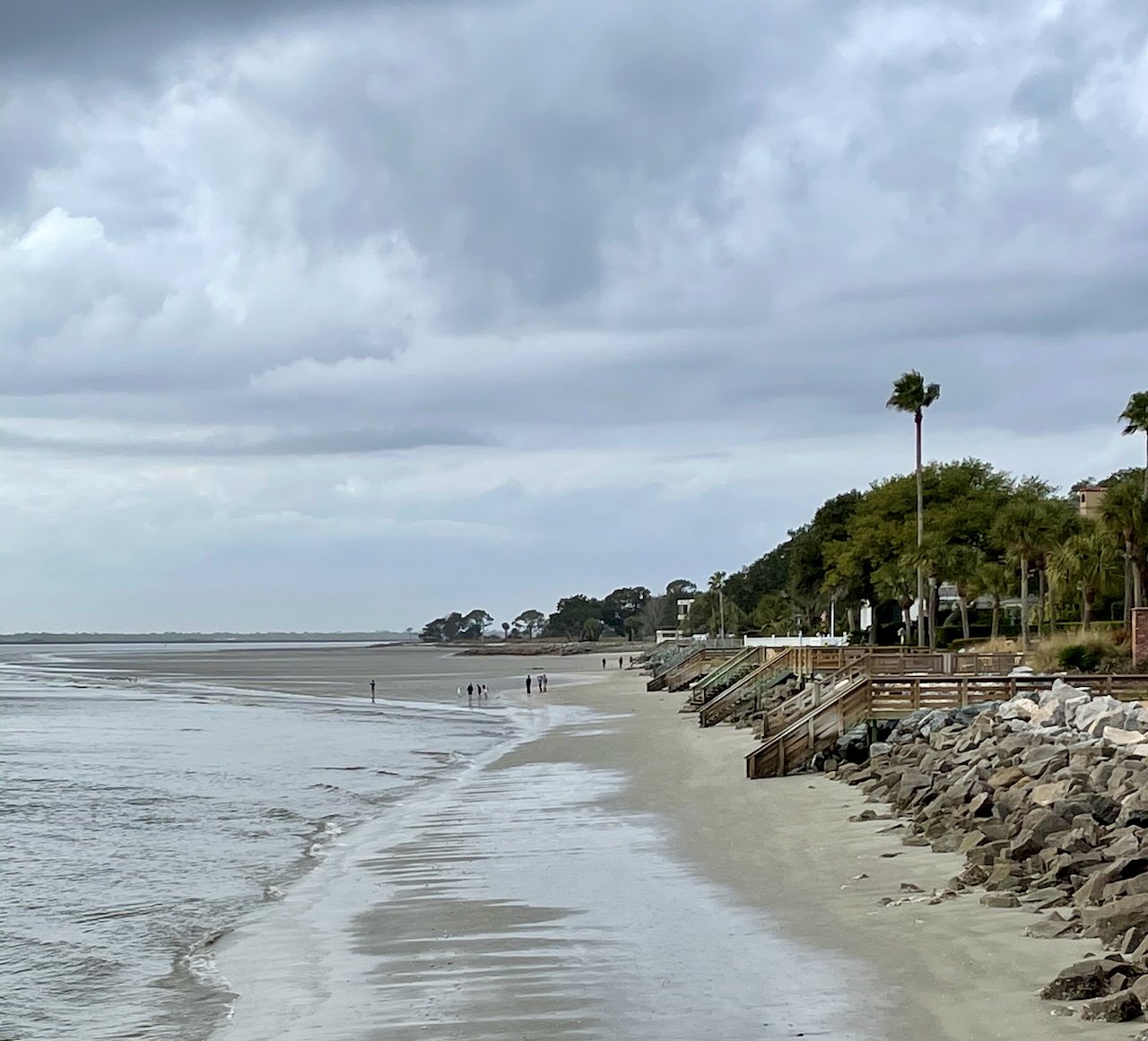
At nightfall, charming shops and local eateries near the public pier along Mallery Street offer fresh seafood and Southern hospitality, delivering an unforgettable shopping and dining experience.
Cultural experiences abound on St. Simons, with unique, local events and festivals celebrating the island’s vibrant community spirit throughout the year. From art shows to music festivals, there’s always something happening that brings the island’s culture to life, often centering around Mallery Street and the public pier area.
St. Simon: See and Do
Access the Beach at Massengale Park
Massengale Park offers ample parking for your LTV and an oceanfront spot on sun-kissed white sand beaches if you’re a fun-in-the-sun beach lover.
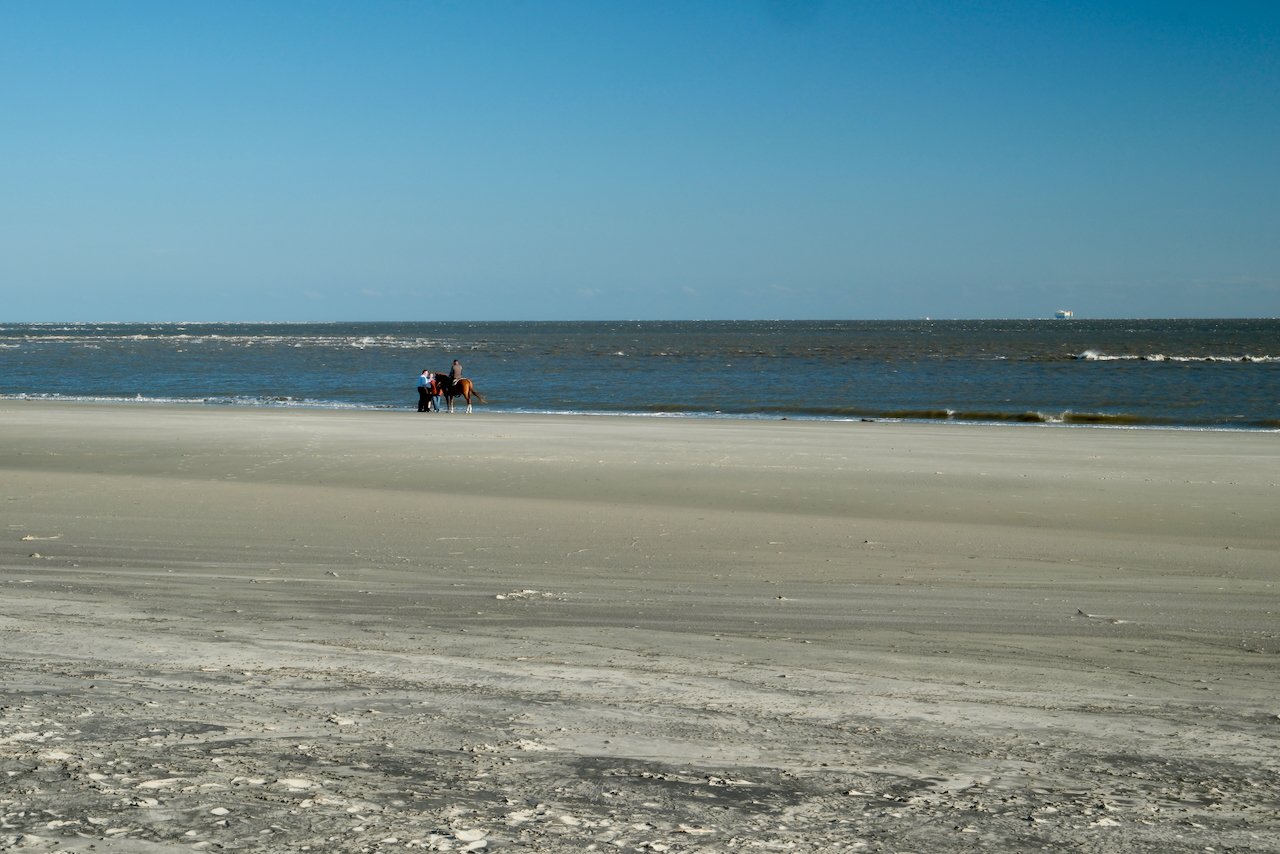
Visit the World War II Homefront Museum
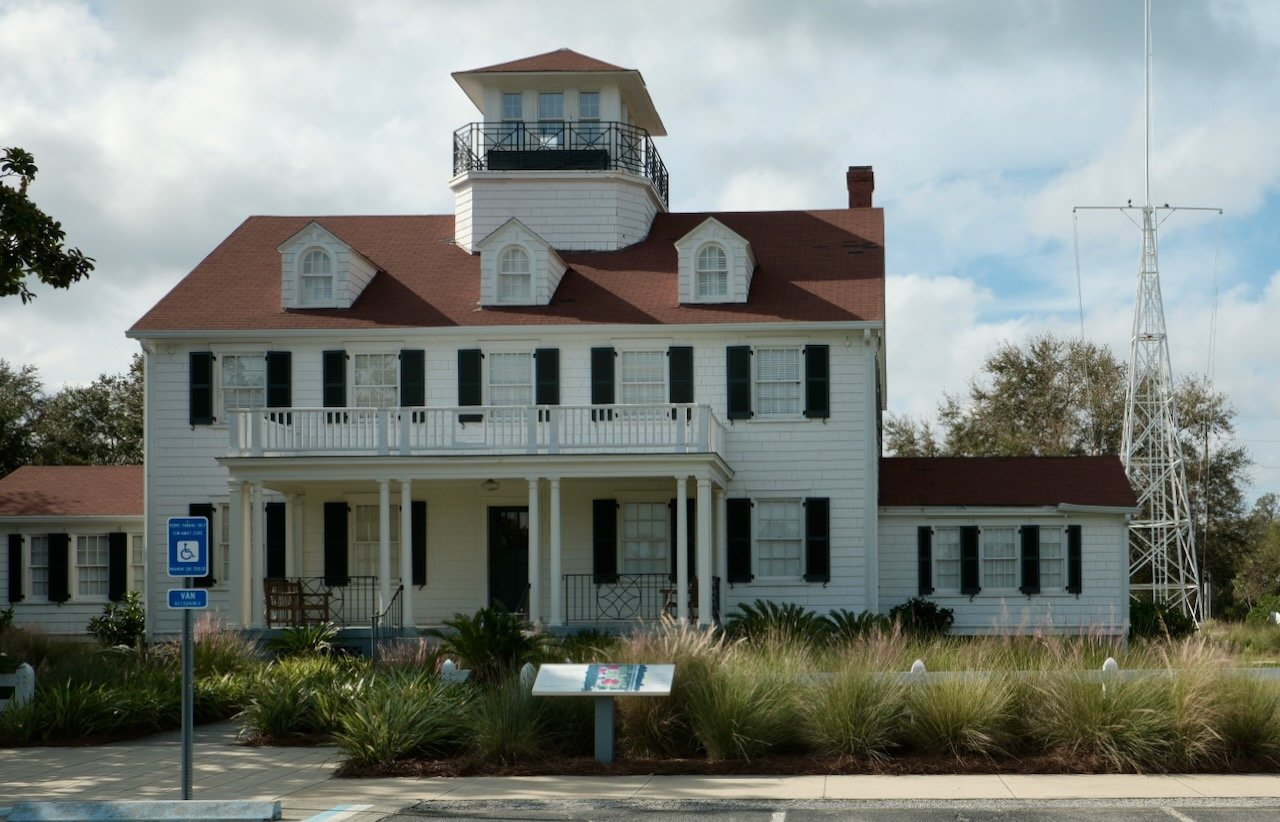
You’ll find the World War II Home Front Museum just down the road from Massengale. The facility stands as a story in and of itself. Before its use as a museum, the building served as the Coast Guard Station on the island. Today, it presents the story of national defense along the Georgia Coast.
Explore The St. Simons Lighthouse and Museum
You’ll find the iconic St. Simons lighthouse at the southern end of the island. At the summit, you’ll encounter panoramic sights that glimpse the area’s maritime heritage. A museum at the lighthouse’s ground level presents its history and offers memorabilia about the lighthouse and the area.
You can walk over the Saint Simons Island public pier a few hundred yards from the lighthouse. From this vantage point, you can watch container ships transit the channel from the Atlantic into the Brunswick trade port and see Jekyll Island’s northern end just across the channel from your vantage point.
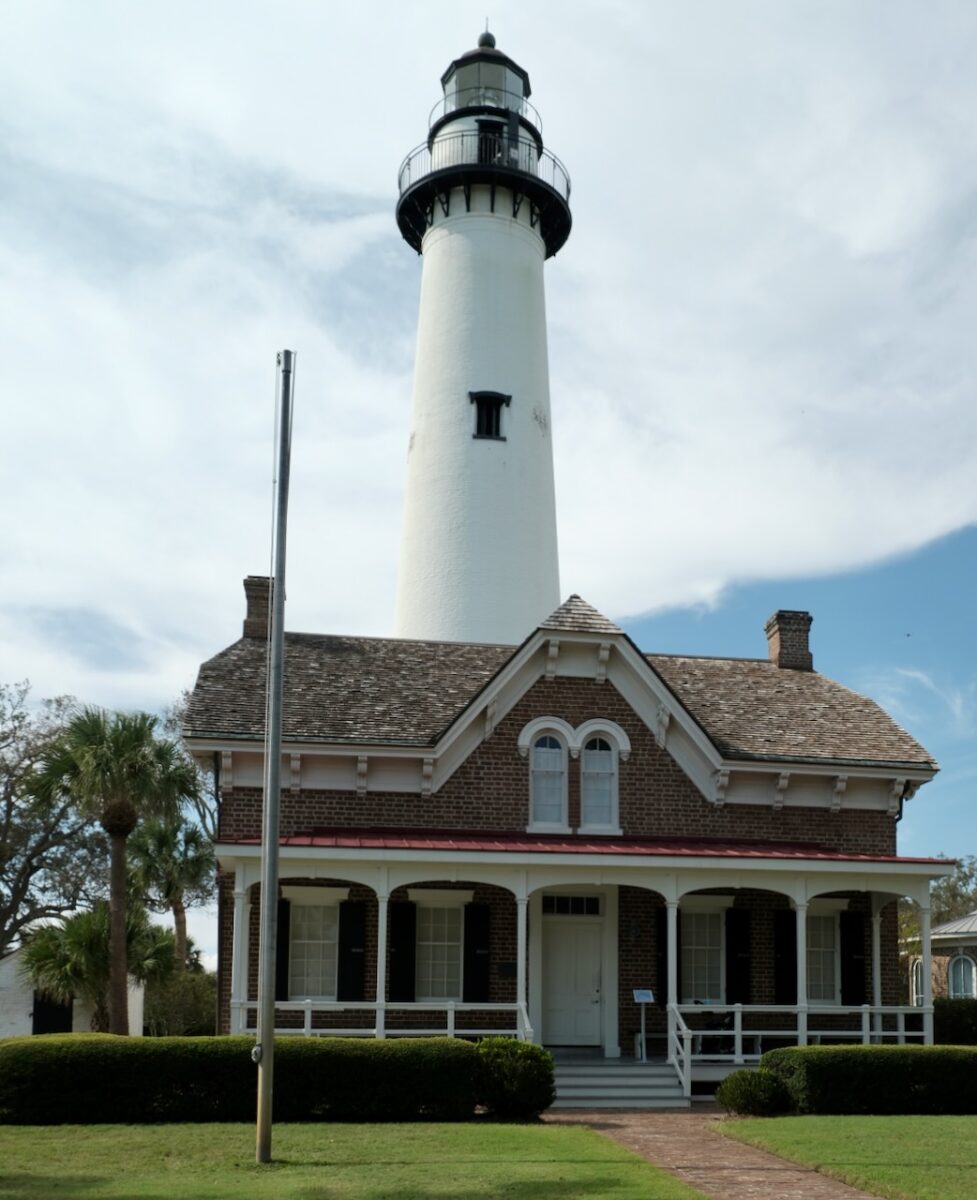
You may recall international news reports in 2019 that a container ship capsized in the channel between St. Simons and Jekyll Islands. The 656-foot-long Golden Ray carried 4,100 passenger cars. The recovery involved multidisciplinary experts from around the world and the construction of a unique seaborne derrick to dismantle the ship section by section. As CNN reported, the incident is the largest ship disaster recovery operation in U.S. history.
The loss of the Golden Ray is an example of how narrow the passage between St. Simons and Jekyll is and how critical the channel is to maritime commerce in the area.
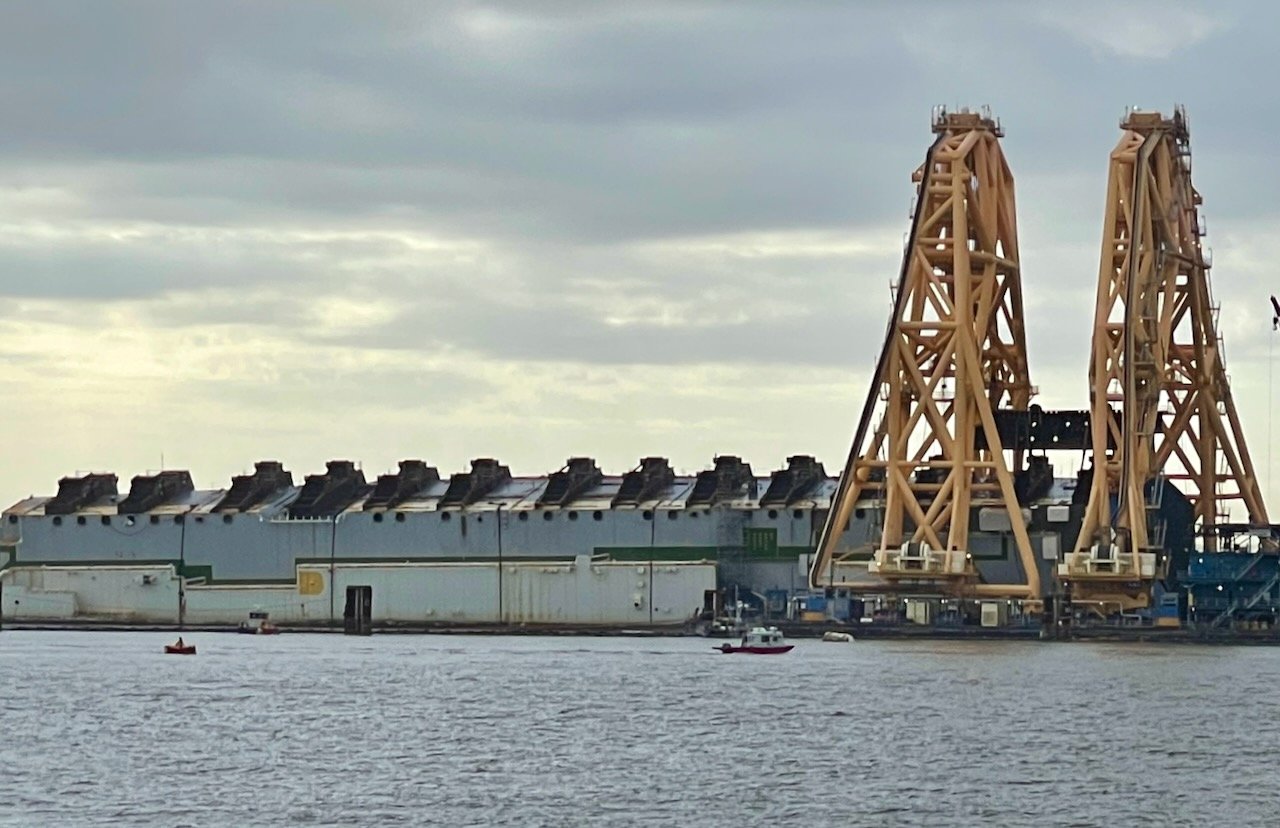
Visit the Fort Frederica National Monument
If you are the sort of traveler who looks for the idyllic, tranquil setting where you can live in the moment while you embrace the past vicariously, then you should put Fort Frederica on your must-visit list.
Fort Frederica was built in 1736 as both a Fort and a town. The fort’s military purpose was to defend British colonial interests from Spanish incursions from the south, and the town’s purpose was to establish a British culture in the region.
The Fort could not be in a more ideal spot on St. Simons Island. Located on the bayside, the Fort and town enjoy a significant, flat, open waterfront in a setting lined with live oak trees. The town is laid out in the traditional British Colonial square with homes that occupy 60′ × 90′ foundations. Panoramic views of Jekyll Island, the Sidney Lanier Bridge, Brunswick, and other areas prominent along the Georgia Coast are visible from the Fort.
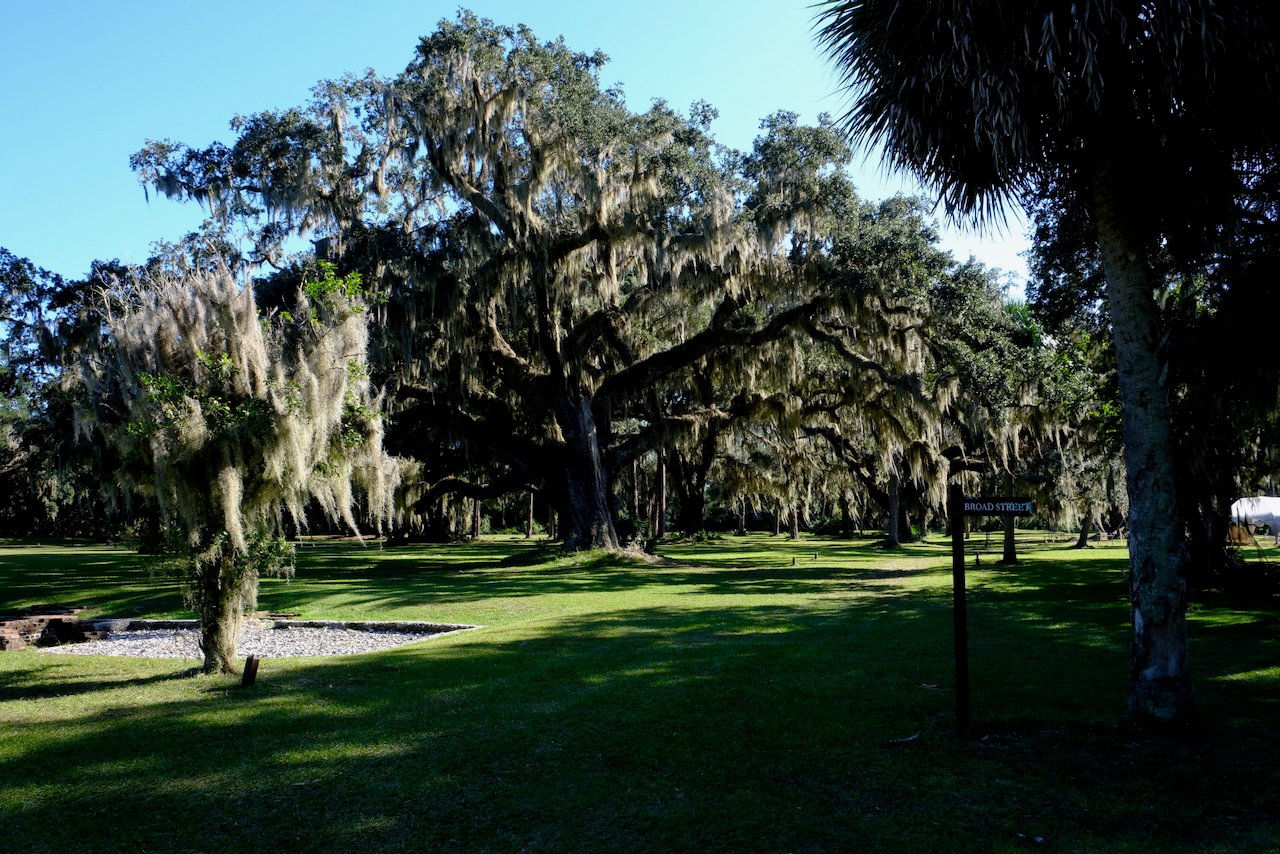
Several notable battles between the Spanish and the British broke out in 1742 over the control of St. Simons. The British prevailed, and conflict over St. Simons was at an end.

The Fort Frederica National Monument is controlled by the U.S. National Park Service (NPS). The NPS website presents much interesting and valuable information to visitors, including backstories about the culture and the area.
Myths, Legends, and Tales of Haunted Waters
Beneath the seductive veneer of this idyllic beachside island retreat lies a deep, complex, interwoven story underpinning this place’s reality.
Many myths, legends, and tales of haunted waters surrounding St. Simons stem from those who have set foot on the North American continent over the millennia. Collectively, these histories about the Georgia Coast and the U.S. South stem from Native Americans; European immigrants; British, French, Spanish, Dutch, and other explorers, and generations of descendants of enslaved peoples from West Africa brought to the Americas and the Caribbean during the Colonial Slave Trade period.
No local tale tells a comprehensive story of the Colonial Slave Trade period. But each local tale tells a unique story that portrays a particular place and time and the intersection of peoples to create part of the entire scope of the lore we hear about in commercial supernatural exploration tours so popular in American culture today.
Commercial operators near the public pier on Mallery Street offer tours of the haunted waters surrounding St. Simons that focus on ghosts, haunted waters, death, atrocities, and the struggles of those who came before us.
Haunted Waters: IGBO Landing at Dunbar Creek
No story about St. Simons would be complete absent an account of tales about haunted waters and souls walking on and through waters around the island.
One story focuses on the Igbo landing at Dunbar Creek on St. Simons Island. This place is the site of a mass suicide in May of 1803 by captives of Igbo descent who took control of a slave trader ship and refused to submit to slavery. During the rebellion, the master and crew of the ship drowned, and the ship ran aground. The Igbo made it ashore at what is now called Igbo Landing at Dunbar Creek.
The Igbo stems from what is now present-day Nigeria. Many slave traders and owners during the Colonial Slave Trade period thought of the Igbo as independent, defiant, rebellious people unsuitable as workers on plantations.
The precise details about the suicides after the rebellion are unclear and stem in part from oral histories and some scant written records that involve a mixture of fact, legend, belief, and myth.
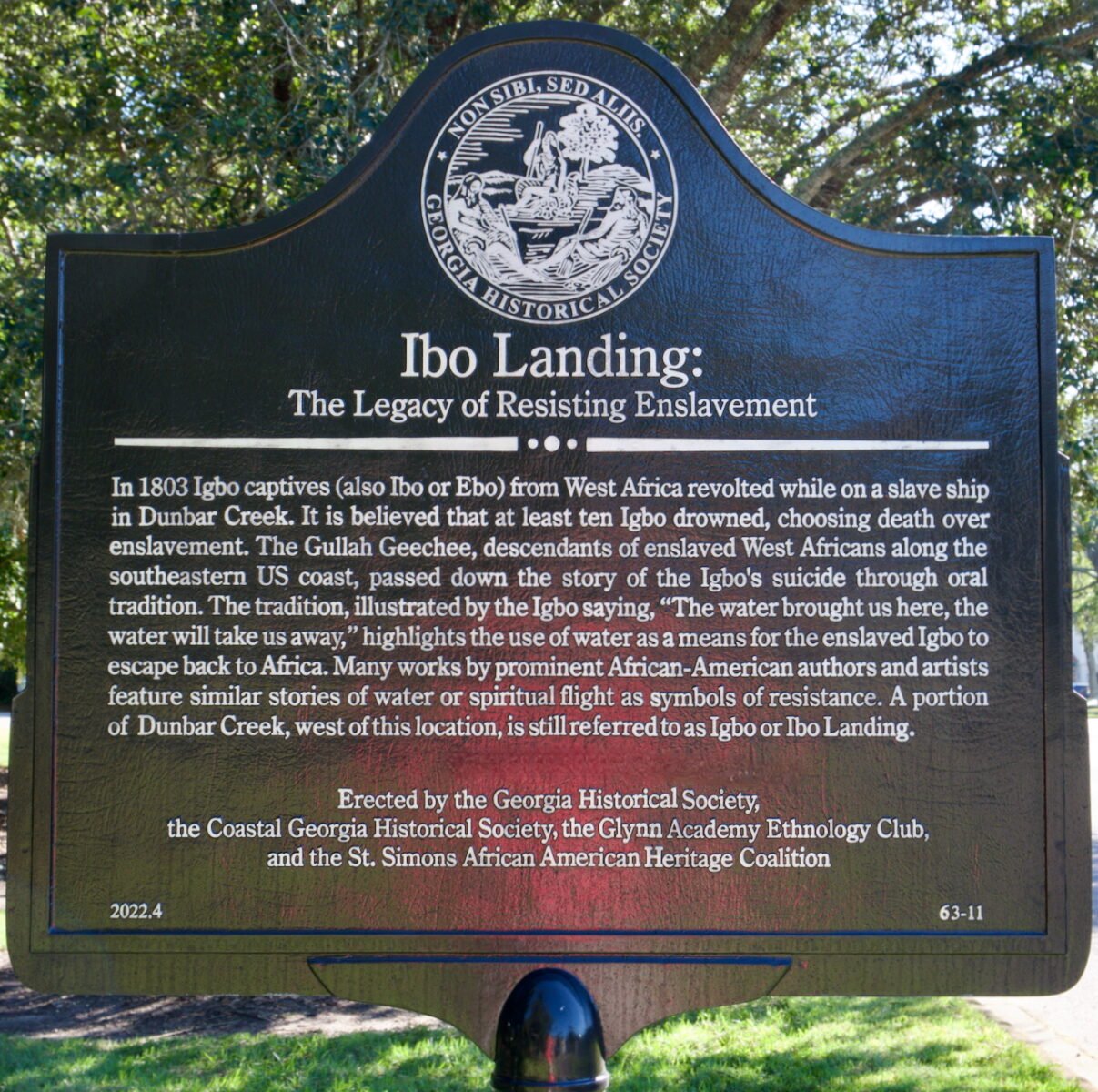
One tale alleges that a chief among the captives led the Igbo into the waters of Dunbar Creek after the incident, singing, “The water spirit brought us, the water spirit will take us home,” in the Igbo language. This story supports the legend of haunted waters at Dunbar Creek, where ghastly apparitions still present themselves as fluid in the waters that run through Dunbar Creek.
Note: For those interested in the sound of Gullah-Geechee, the National Park Service presents recordings of Gullah-Geechee descendants on the Fort Frederica website. You’ll find these recordings here.
A separate account of the Igbo landing incident by a slave trader in Savannah asserts some Igbo died by drowning. After their recovery, the remaining captives were sent to work sites on St. Simons and Sapelo Island.
For those of Christian beliefs, the incident at Igbo Landing constitutes suicide. But then, there’s the Igbo perspective.
The Igbo of this era were not Christians and believed in many spirits, including a water spirit. Water, as elemental to life and central to the Igbo water spirit, represents a fluid barrier between beauty (the natural surroundings of the island) and pain (the condition of slavery) and the realism of everyday life counterposed to the supernatural or the hereafter. The Igbo of this era believed in reincarnation as a path to reunite with their ancestors.
By stepping into the waters of Dunbar Creek, the Igbo took their next step home to Africa to reunite with their ancestors via the spirit world. For the Igbo, this step was not an act of suicide but rather a step into their next life away from the pain and suffering of slavery.
These precepts address why oral histories recount stories about Flying Africans who took wing to fly to Africa to escape slavery. They also explain stories to this day, such as that descendants of the Igbo will not fish or set foot in the waters at or around Dunbar Creek since the waters present the spirits of their ancestors from haunted waters.
In retrospect, it’s ironic the Igbo sought to return home to the land where their competitors — warring tribes in West Africa — captured and sold them into slavery to European traders. In this general sense, absent slavery, the Igbo were like many immigrants. They longed for a homeland where they could no longer belong but found it difficult to adjust to their new homeland, especially in roles as enslaved people.
The Oh Wow Spot in the Area
When you drive around the Brunswick—St. Simons—Jekyll Island area, you can’t help but notice the striking Sidney Lanier Bridge in Brunswick, which connects the islands to the mainland. You´ll see a photo of this bridge at the story’s beginning.
The sweeping arc of the bridge emerges gracefully against the sky on a north-south track and stands as a testament to human ingenuity and artistry. The bridge’s majestic span of 7,780 feet supports a network of cables that connect the towering pylons to present the bridge like a harp strung between the sky and land.
Driving or walking across the bridge, you’re enveloped in a sensory feast. On the ocean side, you’ll see St. Simons, Jekyll, and Cumberland Islands off in the distance. The marshland below reveals a lush, green tapestry framed by distant low-country forests and hammocks that hum with life. Look the other way, and you’ll see the shipyards and part of the City of Brunswick, a blend of historic charm and modern vitality rising confidently above the landscape.
Ironically, the current version of the bridge arose from the ashes of an earlier vertical-lift bridge, which was difficult for ships to navigate when open, and the site of several ships crashed into the bridge.
Eateries
As travel writers, we eat in major cities and little towns worldwide and have developed restaurant price-performance criteria that work for us. The price-performance ratio is the point of measure. Is the price charged worthy of the quality of food on offer?
You’ll find excellent spots to eat along the Georgia Coast for a reasonable price. This notion is especially applicable to areas that are not tourist-centric.
Many eateries on the Georgia Coast, including those that operate under famous names, deliver New York prices but not New York quality offerings. High ratings of some local eateries may stem from locals with a bias toward an establishment. Before trying an eatery, we suggest you look at the reviews from out-of-town travelers and sample the negative reviews before you decide.
Here are a few of our favorite places to eat in Brunswick and St. Simons.
Eateries in Brunswick
Mr. Shuck’s Seafood
In our opinion, Mr. Shuck’s Seafood offers the best seafood at the best prices on the Georgia Coast. You’ll find it in a small shopping center outside the downtown area. Parking is ample for an LTV.
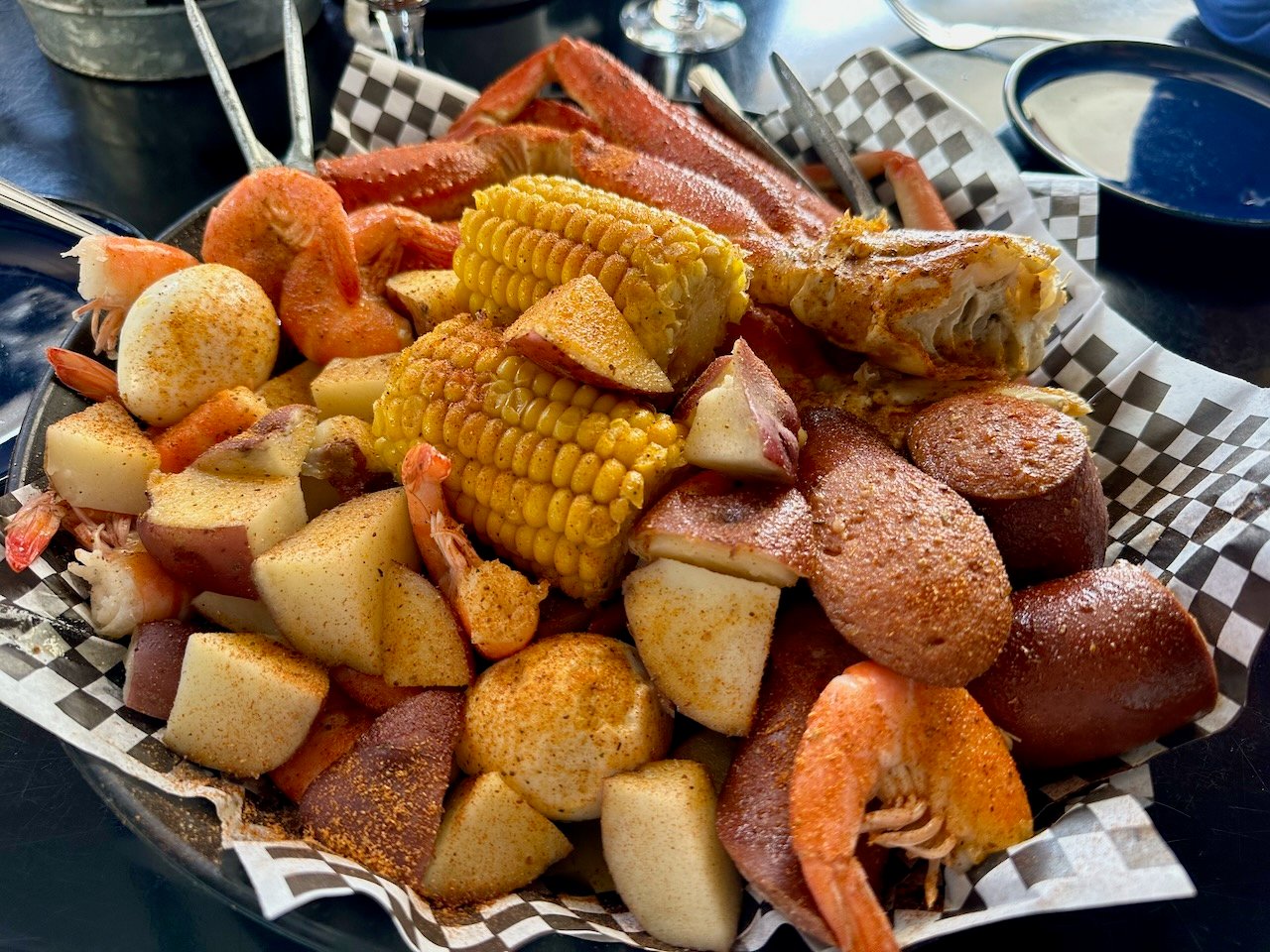
Fox’s Pizza Downtown
Fox’s is a franchise operation. There are several in the Brunswick-St. Simons area, but this is the only one we recommend. They offer a variety of foods at reasonable prices. Parking is limited for an LTV. You’ll need to park around a corner on a side street.
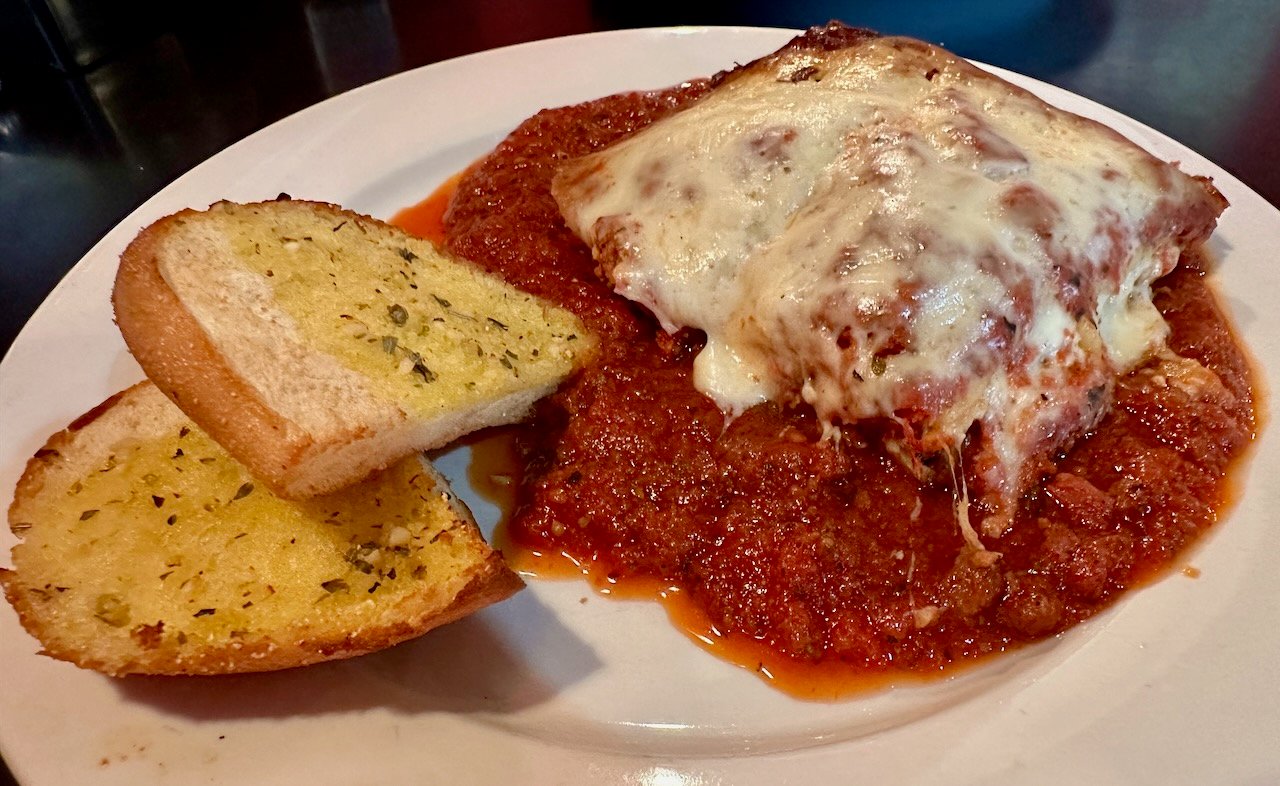
The Yellow Deli
The Yellow Deli is a quirky operation in downtown Brunswick that offers tasty food for reasonable prices. It’s not a full-service restaurant but offers a surprising variety of entrees for a reasonable price. Parking is ample for an LTV.

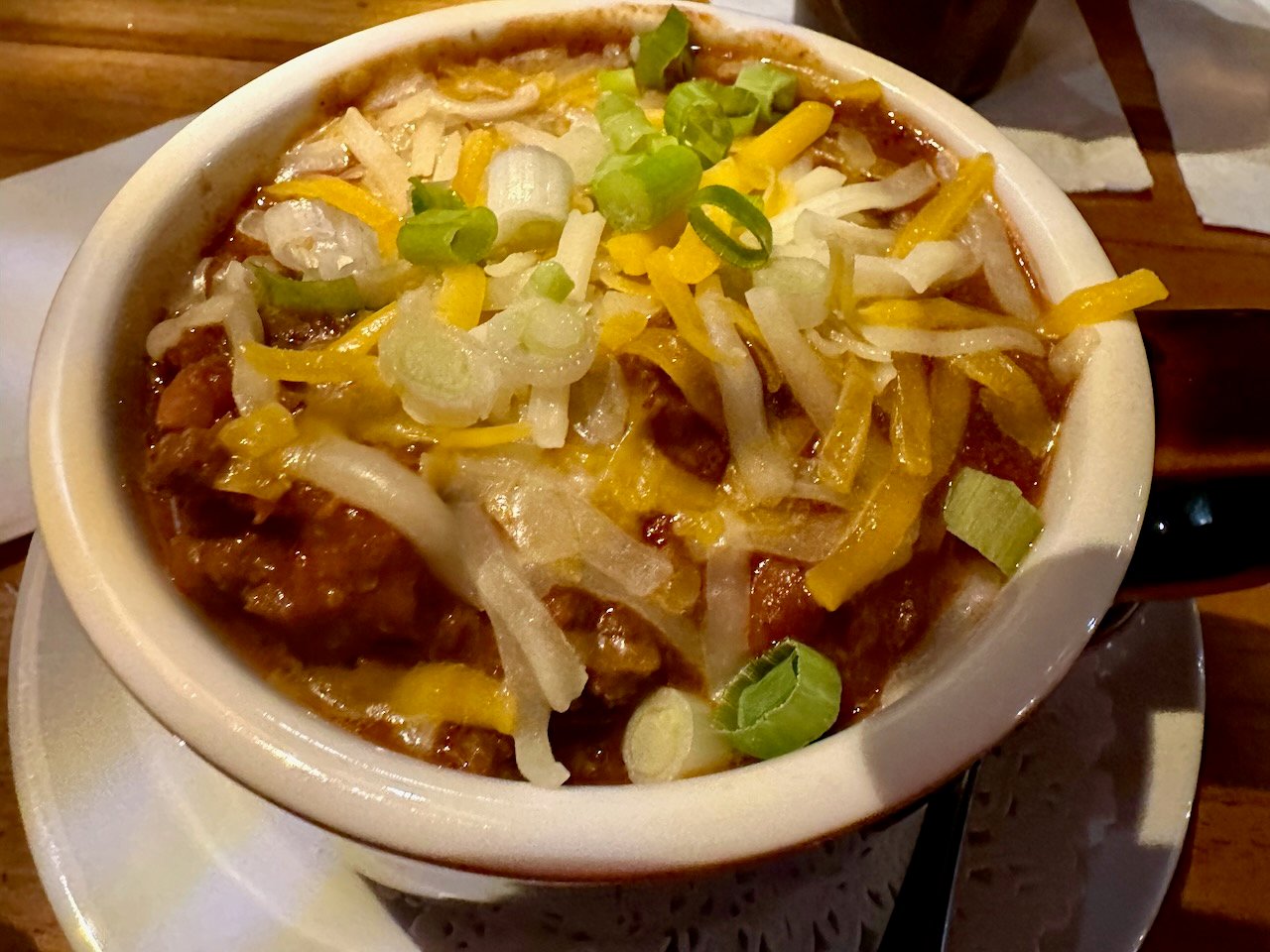
Indigo Coastal Shanty
The Indigo Coastal Shanty is yet another quirky operation in downtown Brunswick that offers tasty food for reasonable prices. By appearance, it fits nicely in the Diners, Dives, and Drive-ins category. The offerings are different from the American tradition but tasty. For parking, you’ll have to find a lot to the side and across the street from the restaurant.
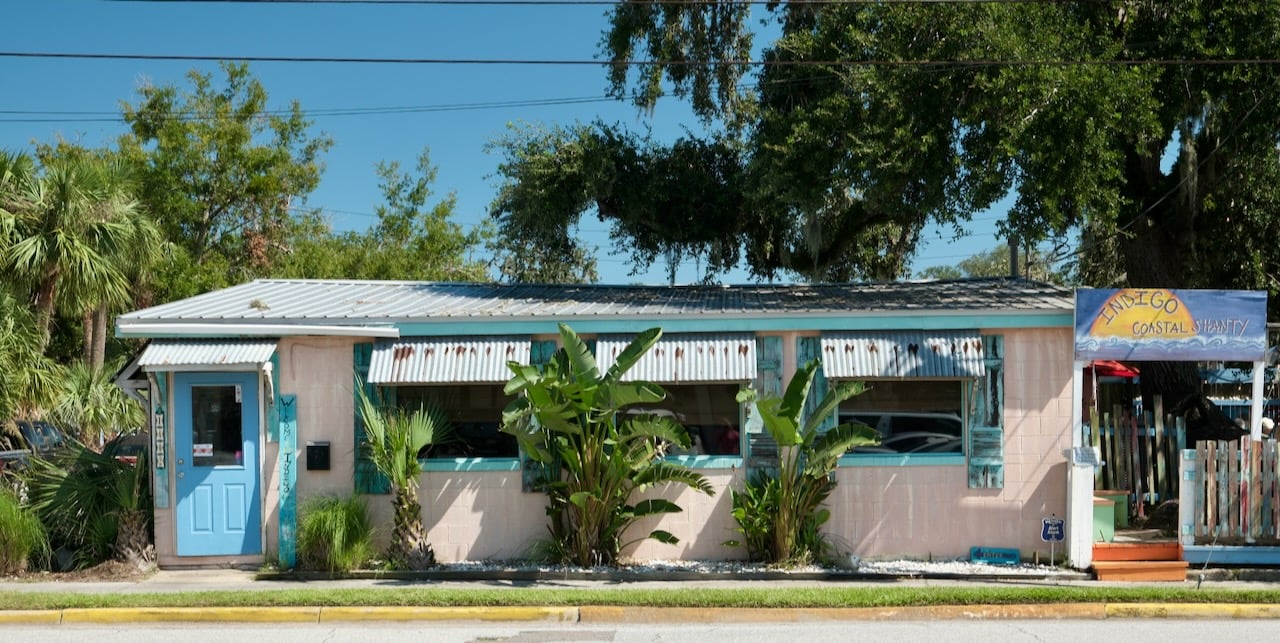
Eateries on St. Simons Island
St. Simons is touristy. Some eateries are notable with reasonable prices. Others offer non-New York quality food for New York prices. Here are a few of our favorites that meet our price-performance criteria.
Café Frederica
This place is, bar none, our favorite breakfast-brunch site on the Georgia Coast. Every entrée on the menu is yummy. Here are a few pictures of their offerings. To park, there is a nearby shopping center as there is no room at the restaurant to park your LTV.
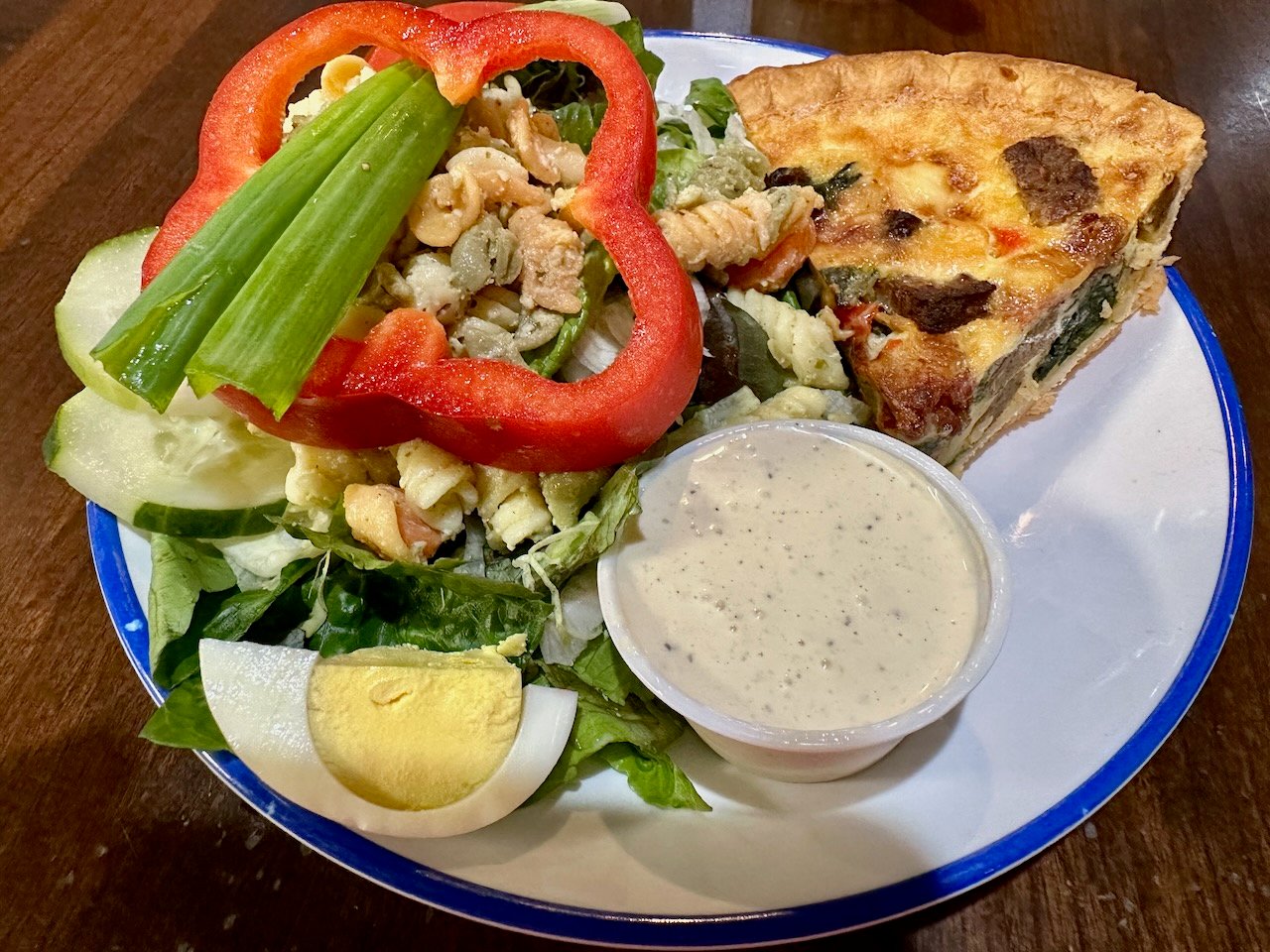
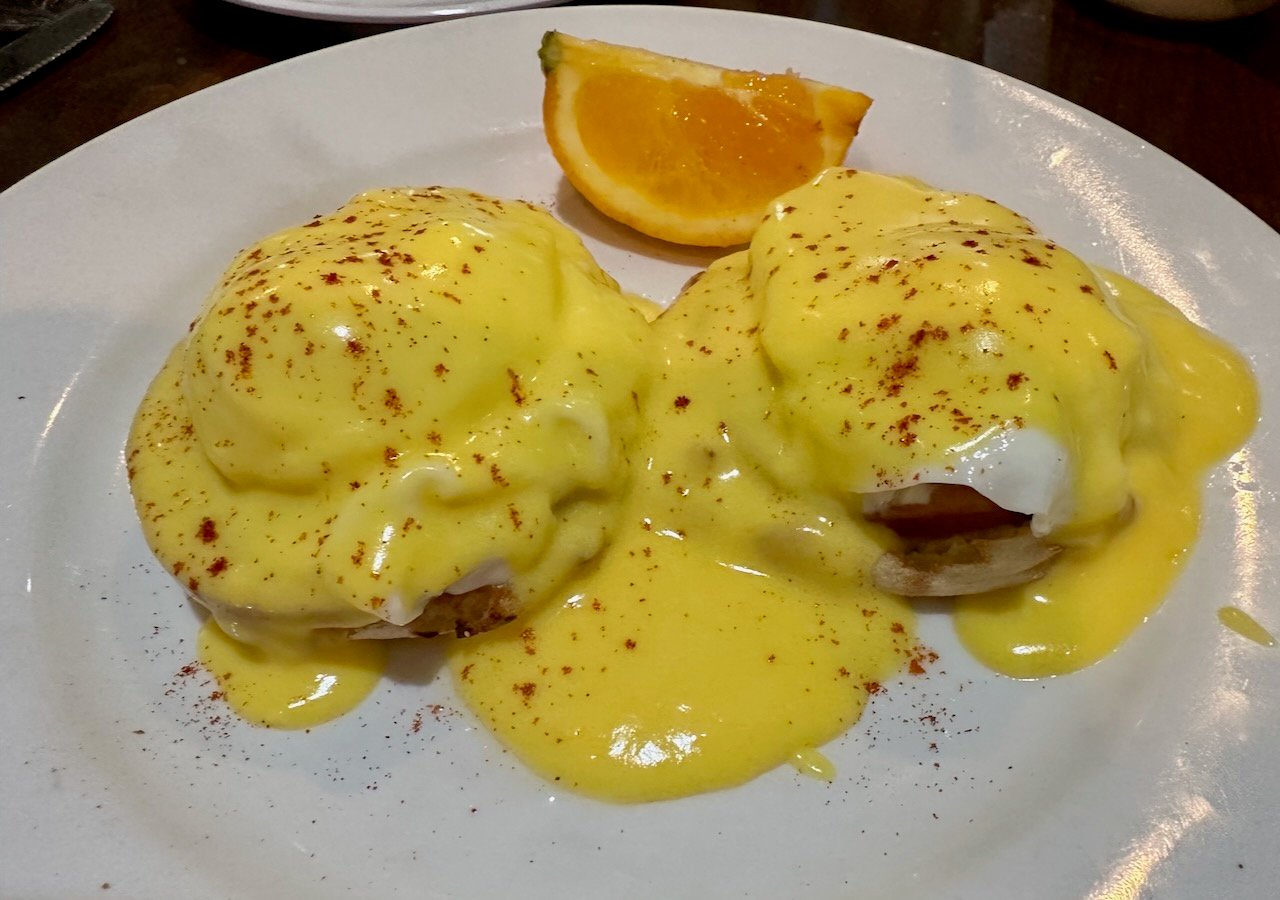
Sal’s Neighborhood Pizzeria
Sal’s is an authentic, full-service Northern Italian-style restaurant built by former professional boxer Sal Cenacola. The entrees are based on creations by Sal’s mom. There might be a spot to park in front of the restaurant if not, park in a nearby shopping center. Here are a few pictures of their offerings.
Southern Soul Barbeque
Southern Soul is run by Jamaicans, and their influence over the barbeque tradition is prominent and spectacular. Parking is limited wherever you can find it. You have to park in a shopping center nearby and across the street.
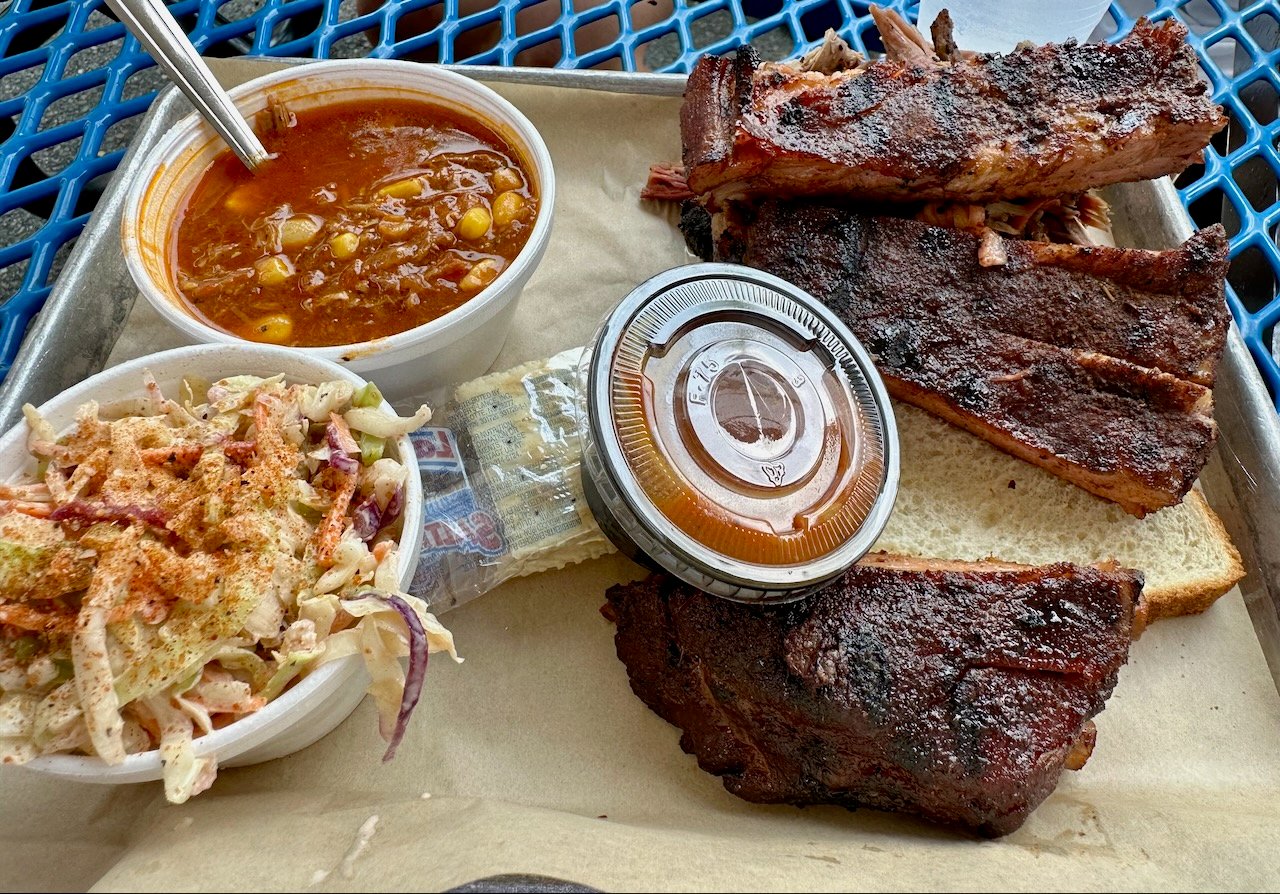
Yelp and Trip Advisor can be your best friends to help you decide where to go, what to do, and where to eat.
When to Visit
Fairweather awaits you in the Brunswick—St. Simons area all year long. We walk along the beach at St. Simons anytime we wish to throughout the winter months each year. There’s no snow or ice during winter, and we’ve never seen either on Coastal Georgia roads.
You can RV on the Georgia coast year-round with almost no need to winterize your LTV. The temperatures may drop into the 20s about two weeks a year in January, but these drops below freezing are atypical and do not occur for long periods. However, you may need to winterize your LTV for your trip to the area during the winter months, depending on the regions of the country through which you travel.
How to Get There
You can reach Brunswick and St. Simons Island at exits 29, 36, and 38 off Interstate I-95.
Emergency RV Services
Yes, we all think about chassis breakdowns and RV house failures and hope they’ll never happen. But should an emergency arise, you’ll find excellent services for your RV chassis and house in Coastal Georgia. Here’s who we recommend.
Dealerships
There are two Mercedes dealerships about 50 miles north in the Savannah area. One (Critz) is in Savannah, and we’re told by one LTV owner that their service is excellent. The other Mercedes dealership is in Hilton Head, South Carolina. The Sprinter Shop foreman at this dealership is a top-shelf professional who has built his own RV on a Sprinter chassis and enjoys helping other RV owners. We cite these dealerships because not all Mercedes dealers will service Sprinters.
Ford
J.C. Lewis Ford
Address: 9505 Abercorn St, Savannah, GA 31406
Phone: (912)-226-1502
Web: https://jclewisford.com
Mercedes-Benz
Critz Mercedes-Benz of Savannah
Address: 7000 Abercorn Street, Savannah, GA 314vannah, GA 31406
Phone: 866 415 2592
Web: https://critz.mercedesdealer.com
Mercedes-Benz of Hilton Head
Address: 155 Fording Island Rd, Bluffton, South Carolina 29910
Phone: (843) 815-0300
Web: https://mercedesbenzhiltonhead.com
Note: The Sprinter shop foreman at this dealership is a Sprinter owner and takes a personal interest in service to RV Sprinter owners.
RV Mobile Technician Service
If you encounter a problem with the house side of your LTV while in Coastal Georgia, you’ll take comfort in knowing there’s an excellent RV Mobile Technician in Savannah who services the Coastal Georgia area.
Tod Burnett runs R.V. Diversified Services LLC. He brings 27 years of R.V. technician experience to the business. Tod makes service calls around the Georgia coast in his Super Duty class pickup, pulling a trailer chock full of tools and supplies. He also has a property in Savannah where he can store and work on your LTV should you leave it with him.
Tod Burnett
RV Diversified Services LLC
Phone: 706-308-4341
Email: [email protected]
Up Next
In Part VI of this series, we’ll travel south along Route 17 along the Georgia Coast to focus on the historic and famous Jekyll Island.
If you missed parts one, two, three, or four of this series, please check them out as we continue our journey down the Georgia Coast.


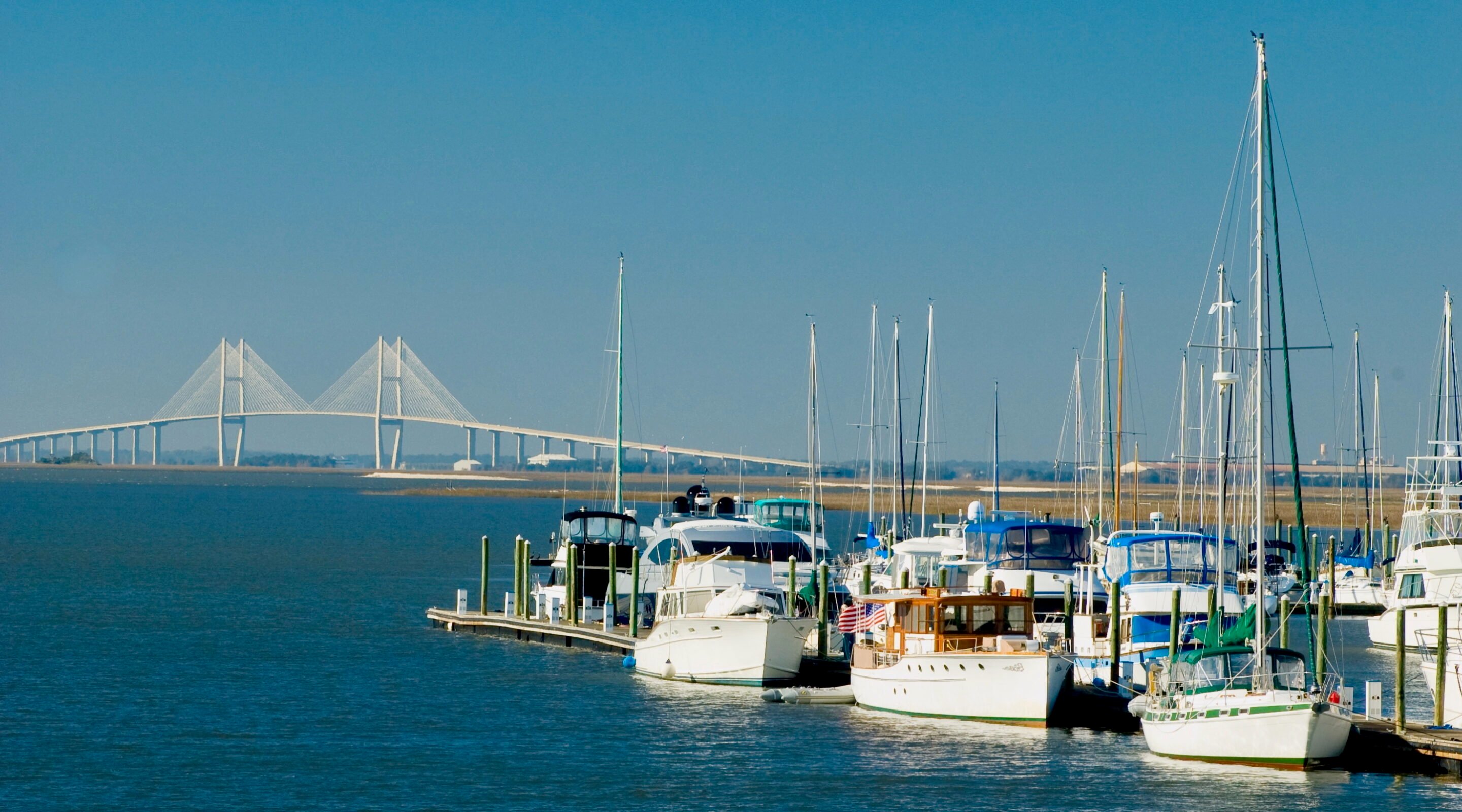
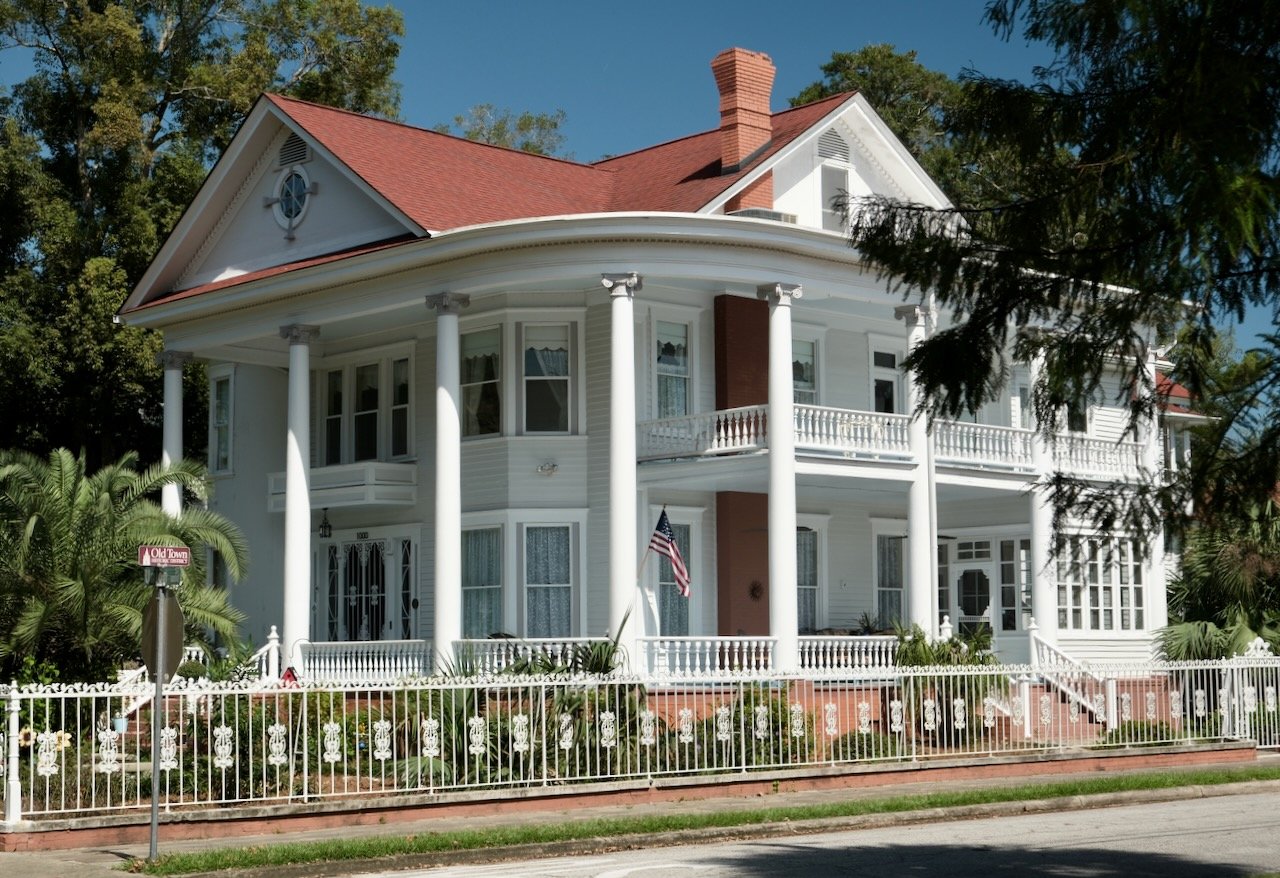

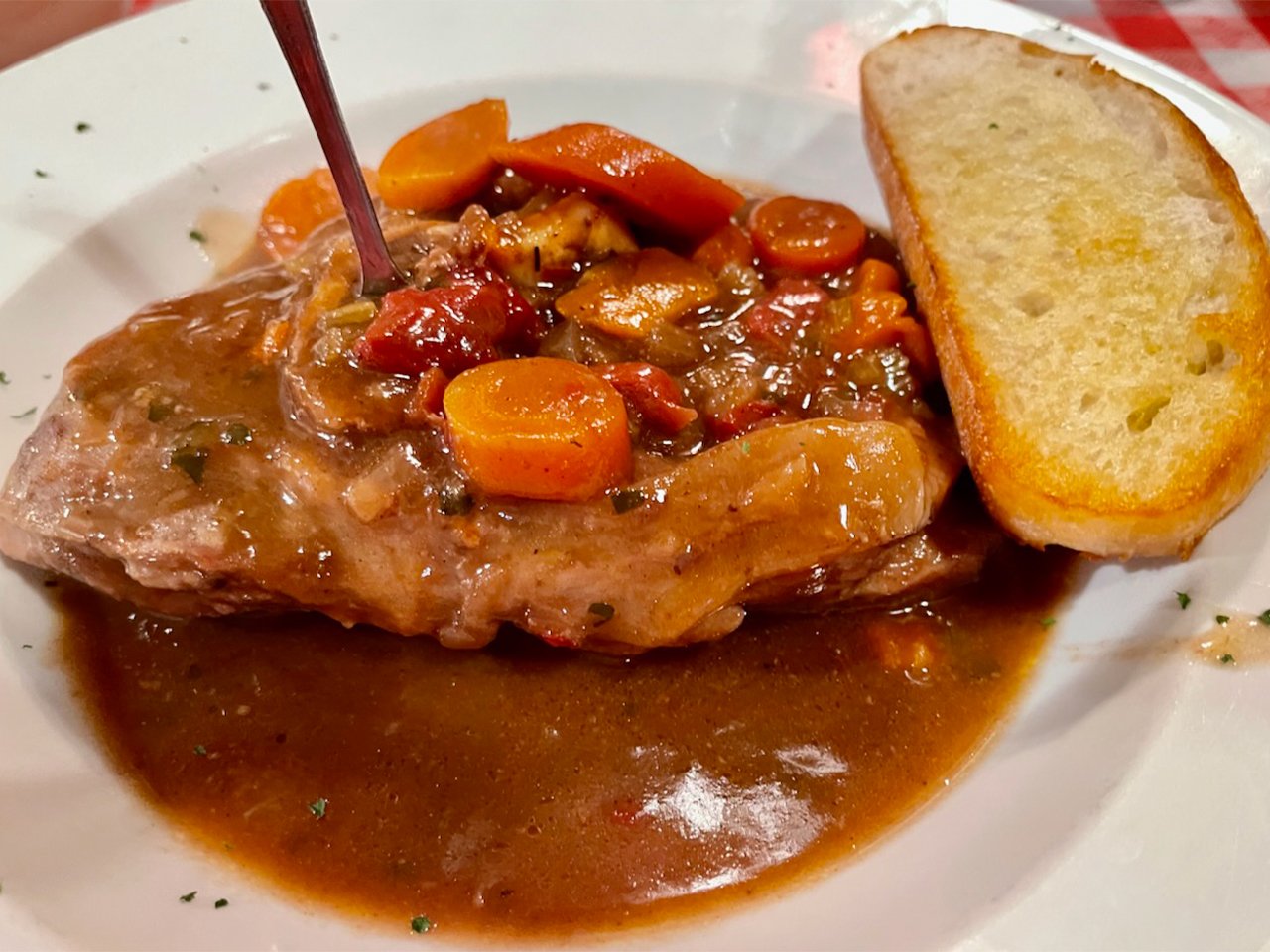
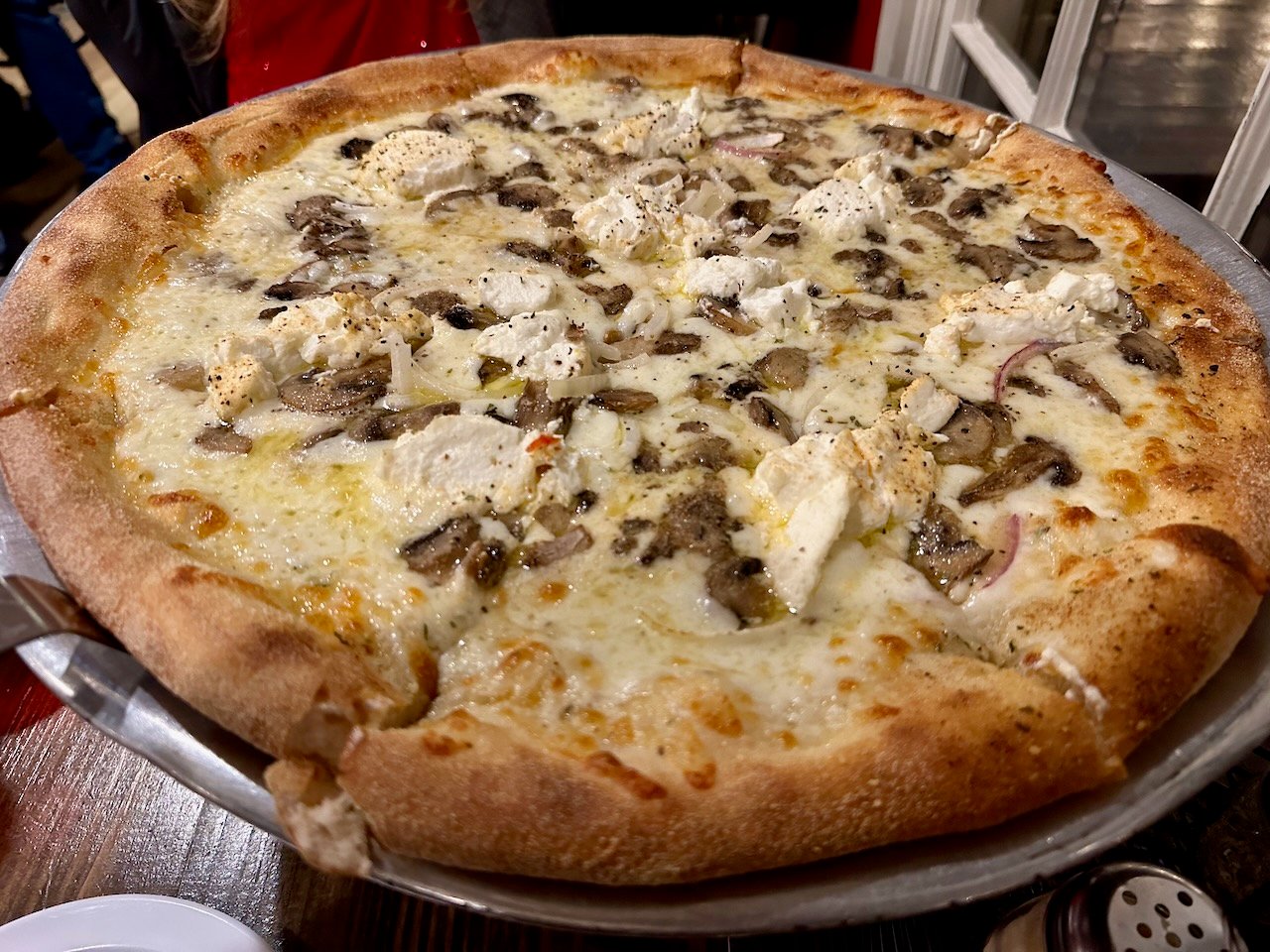



Comments